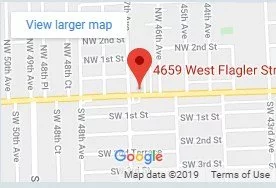Americans Fear Losing Vision More Than Memory, Hearing, or Speech
Numbers First
Vision loss prevalence in the US is staggering! Let’s throw some around as a sample.
- 7.08 million people with visual acuity loss
- 1.08 million of these are blind
- Under-40 Age Bracket: 1.62 million (impairment) and 141 000 (blind) respectively, or roughly 23% of those affected
- Over-85 Age Bracket: 20% have permanent vision loss
- Far more women are blind than men, to the tune of almost double. If we focus on visual impairment, that difference rises fivefold
- Hispanic and Black populations are also more prone to visual loss issues than white folk
- State Variation is a fact: from the low 1.3% of Maine to the high 3.6% of West Virginia
- 65-84 is the hardest hit age bracket in total numbers
Yes, the stats are frightening. It is only natural, then, that Americans deem visual acuity loss and eventually blindness among the top four worst things that could happen to them during their lifetimes.
The technical definition of blindness as relayed by the Centers for Disease Control and the Prevention’s Vision and Eye Health Surveillance System (VEHSS) is best corrected visual acuity of 20/200 or worse. The most up-to-date information on this subject is gathered by these two public organizations around national and state-specific diagnostics from Medicare 100% fee-for-service data, MarketScan private insurance claims, e-health records from the eye disease IRIS Registry, as well as from self-reported data extracted from 4 national surveys and self-reported and examination-based data from the National Health and Nutrition Examination Survey (NHANES).
The Culprits
There are four conditions that drive vision impairment to severe visual loss to blindness, eventually.
In order of importance:
Cataracts: Clouding of the natural lens of the eye which causes blurred or hazy vision. If affected, it happens gradually with age. Eventually, your natural lens needs to be replaced with an artificial intraocular lens to regain vision. Cataract is deemed an Avoidable Blindness Condition, a study in the wider health industry asserting that addressing this disease in a timely fashion may reduce cases of severe vision impairment by 25% or more.
Glaucoma: Niggling eye disease projected to have up to 5.5 million patients alone by 2050. Glaucoma is really a group of eye conditions that cause excessive pressure on the eye’s optic nerve, whose good health is primordial for acute vision. Prevalence is higher in men and it spikes up to first causal position in ages over 55.
Undercorrected Refractive Error: Sometimes twined up with Uncorrected (when errors are not corrected at all), this term defines individuals whose refractive errors —any vision problem that keeps light from focusing correctly on your retina and, thus, does not allow you to see clearly— are not adequately corrected by their prescriptions. Also an avoidable blindness factor.
Age-Related Macular Degeneration: AMD is a disease of the eye that can blur central vision. Age damages the macula, which is a vital part with abundant photoreceptor cells at the back of the retina and which enables sharp and straight-ahead vision. Increases its impact with older age groups.
Diabetic Retinopathy: This visual complication from diabetes affects the eye by damaging the blood vessels of the light-sensitive tissue towards the back of the retina (back of the eye). It is liable to develop acutely for anyone with Types 1 and 2 diabetes.
Although there are reported variations between age, socio-economic, and geographic groups, this is more or less the standard in the US and worldwide.
Sources:
https://jamanetwork.com/journals/jamaophthalmology/fullarticle/2779910
https://www.thelancet.com/journals/langlo/article/PIIS2214-109X(20)30489-7/fulltext
https://thedoctorweighsin.com/causes-blindness/


